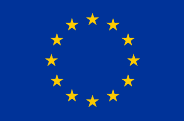
Safe non-food consumer Products in the EU and China
This factsheet applies to car seats (Child Restraint System: CRS) for use by children. Car seats are used to transport young children in vehicles with the support of a child restraint. These include infant carriers, a supplementary chair, capable of being anchored to a power-driven vehicle. It is so designed to reduce the risk of injury to the occupant, in the event of a collision or of abrupt deceleration of the vehicle.
‘ISOFIX’ is a system for the connection of child restraint systems to vehicles which has two vehicle rigid anchorages, two corresponding rigid attachments on the child restraint system and a mean to limit the pitch rotation of the child restraint system
There are five types of child restraints based on the child’s weight:
ISOFIX Child Restraint Systems fall into 7 ISOFIX size classes described in Regulation No 16 Annex 17, Appendix 2 (see ‘Main applicable legislation’ below):
A — ISO/F3: Full Height Forward Facing toddler CRS
B — ISO/F2: Reduced Height Forward Facing toddler CRS
B1 — ISO/F2X: Reduced Height Forward Facing Toddler CRS
C — ISO/R3: Full Size Rearward Facing toddler CRS
D — ISO/R2: Reduced Size Rearward Facing toddler CRS
E — ISO/R1: Rearward Facing infant CRS
F — ISO/L1: Left Lateral Facing position CRS (carry cot)
G — ISO/L2: Right Lateral Facing position CRS (carry cot)
This is a list of examples of common risks. However, the manufacturer has to carry out an assessment of the product that covers all relevant risks that may be associated with it and actions taken to mitigate these where possible. A general definition of risk and its relationship to hazards can be found in the factsheet on Risk management.
1. Mechanical/physical risks:
2. Chemical risks:
3. Thermal risks:
4. Hygiene risks:
A general definition of risk and its relationship to hazards can be found in the factsheet on Risk management.
Specific examples of measures taken against dangerous car seats offered for sale in the European Union are available on the Safety Gate website. Type ‘car seat’ into the free text search box (but without the quotation marks) and select the ‘Childcare articles and children’s equipment’ Product Category to view notified examples. A better understanding of mistakes made in the safety assessment of the car seat, or its manufacture can help avoid their repetition.
The main requirements for car seats are covered by the UN regulations:
Please note that every product must be safe for consumers, according to the General Product Safety Directive (GPSD) of the EU.
Under the Directive, a product is safe if it meets all legal safety requirements under European or national law.
A ‘safe product’ shall mean –
any product which, under normal or reasonably foreseeable conditions of use, does not present any risk or only the minimum risks compatible with the product’s use, considered to be acceptable and consistent with a high level of protection for the safety and health of persons
It is important to take into account the following points in particular:
It is essential for manufacturers to consider whether their products might also have a ‘play value’ to a child, e.g. because it has a rattle effect or some other toy or play item attached to it (i.e. a plush toys attached to the strap). This is because products which have play value are considered as toys and must comply with all the requirements of the Toy Safety Directive 2009/48/EC. To be considered as a toy for the purpose of the Directive, the play value has to be introduced in an intended way by the manufacturer. The EU has issued a good deal of guidance on toy safety to help manufacturers, and this includes guidance document no. 4 which can be found here will specifically help manufacturers consider the issue of childcare articles which may also fall within the definition of being a toy.
Comprehensive factsheets on the requirements concerning toys can be found here.
The following summarises some further key applicable laws:
All product information must be given in the official language(s) of the country in which the car seat is sold.
To ensure safety of car seats, there is also a range of general requirements to be fulfilled. These are explained in the following factsheets and need to be read in conjunction with this factsheet:
You may also visit the SPEAC ACADEMY to learn more about the EU Safety requirements.
The provided information was updated in 2022. Please note that some of the provided information could change during possible subsequent revisions of legislation, standards, and guidance documents. For any updates of official information on the EU product safety rules, please follow the Link to the webpage of the European Commission.
This document was produced with the financial support of the European Union. Its contents are the sole responsibility of SPEAC project and do not necessarily reflect the views of the European Union.

This website was created and maintained with the financial support of the European Union. Its contents are the sole responsibility of SPEAC project and do not necessarily reflect the views of the European Union.